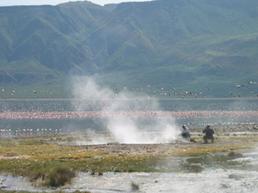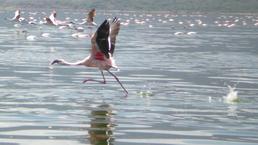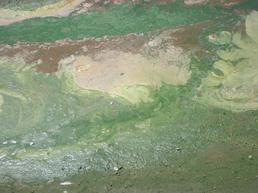Mrs Sarah A Ward
- Position
- Postgraduate Research Student
- Institution
- Geography (FSHS)
- saj1g08@soton.ac.uk
- Contact
- Complete this online contact form to contact Sarah.
I studied Physics with Planetary Science at the University of Leicester, then came to Southampton to do a masters in Remote Sensing. I started a complexity PhD in 2009, which has allowed me to create a PhD to pursue my interest in the soda lake ecosystems in Kenya. The soda lakes are hyper-saline and subject to large fluctuations in water chemistry which makes it a difficult environment for life to thrive in. The species that do cope in these conditions dominate their trophic level in huge abundances, and so these lake ecosystems are relatively simple. Ecologists have found it difficult to understand the ecosystem dynamics using traditional techniques however. There are huge fluctuations in cyanobacteria abundance, and flamingo die-off events which are not well understood, and it is necessary to understand the ecosystem dynamics if we are to conserve the lesser flamingo species. I am interested in modelling the ecosystem in order to understand how it functions, with a strong emphasis on validation with fieldwork.
In the first year of my PhD I went to Kenya to collect cores from three different soda lakes. I have been working on these cores to obtain records of organic matter abundance and species composition, as well as investigating novel proxies for flamingo abundance. Now in my second year the challenge is to construct a model using these data that will allow changes in flamingo behaviour and breeding events to be explored.
Working with...
 Seth Bullock Seth BullockProfessor, Electronics and Computer Science (FPAS) |
 Terence Dawson Terence DawsonProfessor, Geography (FSHS) |
Research Groups
Institute for Complex Systems Simulations (ICSS)
University of Southampton


